2010 Subaru Legacy 2.5GT – Click above for high-res image gallery
For one reason or another, we've always thought that if you delved deep enough into the history of Subaru, you'd discover the Japanese automaker is, in fact, Swedish. One can imagine rifling through the company's dusty archives, only to discover that at some point in time, through some quirk of fate – or perhaps a common love of fish – Subaru was born in Scandinavia, yet it ended up turning Japanese (I really think so). Just look at the evidence: Quirky styling? Check. Steadfast adherence to left-field drivetrains? Check. Time-honored emphasis on honest utility? Check. Willfully different clientele base? Check. Good in winter? Uh-huh. Sound like any Swedish automakers we know?
There's one key difference between the Nipponese automaker and its kindred spirits over at Saab and Volvo, and it's a biggie: Subaru is making money, and they're picking up share. Year-to-date, Subie has lost just 1.8% of its sales year-over-year in America's wretched, turd-down-the-toilet economy. In this "flat is the new up" market, that's a stellar performance – far better than any other mainline automaker, including current industry darlings Hyundai/Kia. And after a day's drive in the firm's new-for-2010 Legacy, we think they're poised for even greater success. Follow the jump to find out why.
Photos Copyright ©2008 Chris Paukert / Weblogs, Inc.
2009 marks the 20th year of Subaru's Legacy lineup, and in a happy bit of self-gifting, the boys and gals at Fuji Heavy Industries (FHI) have popped out this brand-spanking new fifth-generation model. As is the way these days, the all-wheel drive sedan has grown in all dimensions. Use of a new platform ensures that the new car is 1.4-inches longer (to 186.4), 3.6-inches wider (to 71.7), and 3.2-inches taller (59.3) than the exiting model. Overall length may have only grown fractionally, but the wheelbase has swollen by 3.2 inches, prioritizing additional space in the passenger compartment.
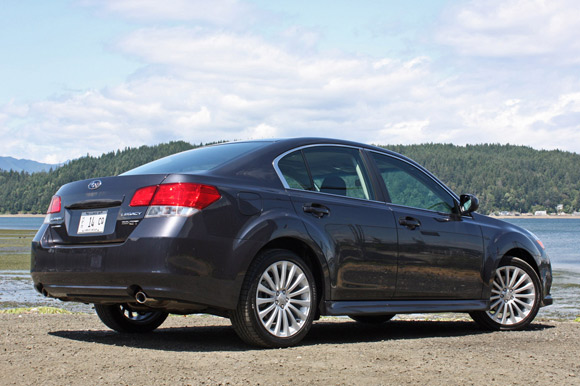
One might reasonably fear that the Legacy has picked up a whole mess of additional poundage in the embiggening process. Not so. According to Subaru, the base car weighs 3,270 pounds, and all models are no more than 65 pounds heavier than their 2009 counterparts – an eminently reasonable trade-off for a massive increase in interior room and superior content levels.
Outside, the 2010 model is much more assertive than the outgoing car, which itself was a bit of a shrinking violet. After the departure of designer Andreas Zapatinas and his Edselian B9 Tribeca, the Pleiades brand seemed to lose a bit of its design nerve and the will to create a unified corporate face. But now, it finally seems to be seeking out its mojo once again with this new Legacy.
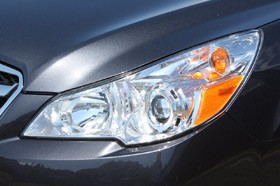
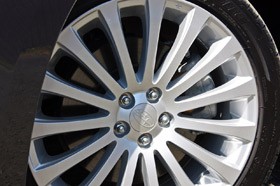
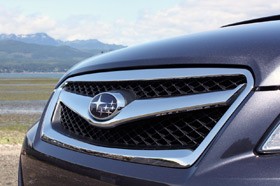
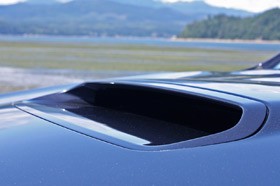
We're not entirely sure this is a good thing, as the Legacy has gone from understated confidence to a jumble of incomplete ideas (Chrysler Sebring hawkeye headlamps, chrome-happy "wing" grille, hulking flared fenders to emphasize the car's all-wheel drive) that fail to live in complete harmony with each other. We'll leave final judgment up to you, only with the knowledge that the whole package looks better on the street than it does in photos (particularly when fitted with larger alloys that don't get lost in the cartoonishly overemphasized wells) and our divisiveness towards it softened over time. Thankfully, Subaru sales have never been predicated on beautiful sheetmetal, and we can't see this model being any different.
Open up the wider-angle, newly-framed doors (the old, rattle-prone sashless jobbies are gone), and a significantly larger and much-improved interior awaits. Dominating the instrument panel is a silver-effect center stack topped with a birdbath-like information display. The vertical array houses the usual complement of audio and HVAC controls (along with an eight-inch navigation screen if so-optioned), and it has a deep storage pocket for odds-n-ends. Plastics are nicely grained and solid fit-and-finish was in evidence, but greater use of soft-touch surfaces and more sincere-looking faux wood trim on Limited models wouldn't go amiss.
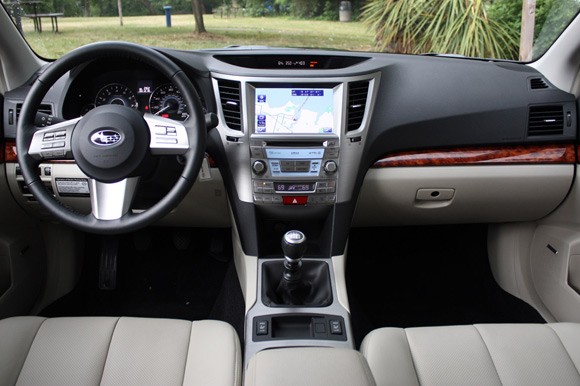
All the controls are easy to reach and intuitive to use, with the exception of a too-crowded and too-low panel that houses the power mirror controls, electronic parking brake, hillholder and traction control defeat buttons, trunk release, gauge brightness control, and a couple of odd-looking blanks. It's simple enough to use once you get the hang of it, but we'd prefer to see the parking brake located on the center console and a larger, separate trunk release. We were a bit surprised not to see the availability of some sort of keyless start system, but as they're often more trouble than they're worth, the absence isn't worth grousing over.
In addition to its obviously heightened quality, the big story with the 2010's interior is its newfound space. In particular, rear accommodations are now genuinely large, with an extra four inches of legroom thanks to the longer wheelbase and deeply scooped-out front seatbacks. Our six-foot, five-inch co-driver had no trouble getting comfortable, and even when he was in situ, there was plenty of knee- and toe-room left behind him for full-grown adults. Total EPA volume is up by 9% to 117.7 cubic feet and betters that of the Toyota Camry and Volkswagen Passat, while trunk space swells by 29% to 14.7 cubic feet (more capacity than Honda's larger Accord).
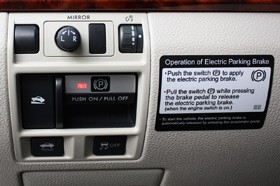
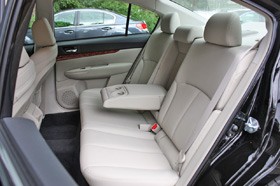
Even skinflint buyers of base $19,995 2.5i models (a decrease of $800 versus 2009) receive such niceties as an electronic parking brake with a nifty defeatable hill-holder feature as well as automatic headlamps and a 3.5 mm auxiliary audio jack. Stump for the Premium package (available regardless of engine and transmission selection) and you'll get a well-judged leather-wrapped three-spoke wheel, ten-way power driver's seat, 16-inch alloys, and the availability of more option packages, including uprated nine-speaker Harman-Kardon audio, a moonroof, and a cold weather package featuring heated seats, mirrors, and windshield wiper de-icer. The top-shelf Limited brings with it a set of easy-to-use dual-zone HVAC controls, leather, and four-way power for the passenger's seat. If you want to get Subaru's new voice-activated navigation system (Try telling it "I'm hungry") with backup camera and Bluetooth audio and telephone, you'll have to open your wallet for the Limited trim before you can order it.
We were actually afforded brief drives in most of the 2010 Legacy variants, including a 2.5i equipped with the company's new Lineartronic constant-velocity transmission (CVT) and another with a six-speed manual, as well as the 3.6-liter Limited and 2.5GT Limited, and ended up coming away impressed with the value and variety of attributes each model delivered.
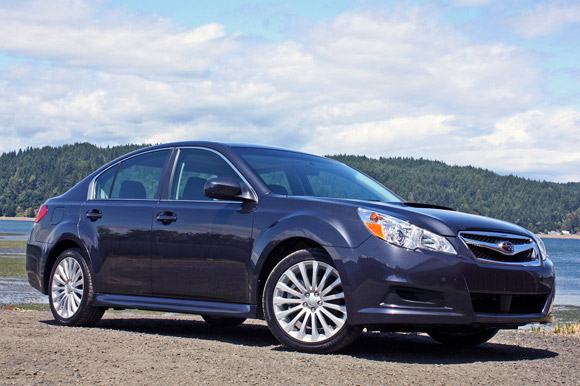
We started in the shallow end of the pricing pool with the fuel-economy king 2.5i paired with the optional paddleshift CVT (a six-speed manual comes standard). The 2.5-liter flat-four nets 170 horsepower (@ 5,600 rpm) and 170 pound-feet of torque (@ 4,000 rpm), a combination that ought to be perfectly acceptable for around-town pottering and low-demand interstate motoring. A PZEV emissions compliant model is available for an additional $300 and does not affect the engine's power rating.
Like most other continously variable transmissions, the chain-driven Lineartronic almost always lives in the motor's sweet-spot, so it makes the most of the engine's meager reserves. It should be noted, however, that it does so with plenty of the stretched rubber-band sensation that tends to accompany this sort of transmission. This isn't a driveline combination that invites any sort of sporting behavior, but at least it returns strong fuel economy figures of 23 miles-per-gallon city and 31 highway – numbers that are right near the top of its class – a particularly remarkable feat considering this sedan lives with the added parasitic drag of all-wheel drive.
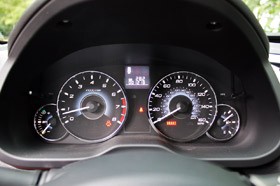
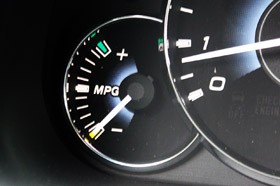
Like all other auto cogswappers in the new Legacy lineup, the CVT features manual shift paddles. In this case, the paddles summon six pre-set "speeds" (right lever upshift, left lever downshift), and they work quickly with minimal shift shock. Better still, the paddles are active all the time whether you slot the gearlever into "M" for full manual control or when opportunistically called upon in "D" to induce engine braking on a downhill grade or summon additional acceleration for passing. Subaru figures the CVT is good for a solid four miles-per-gallon on the highway, or up to 75 extra miles per 18.5 gallon tankful of regular gas – nothing to be sneezed at. There's even an "eco-meter" in the instrument cluster to help you gauge exactly how many species your locomotion is endangering at any given moment.
For our part, we prefer the 2.5i with the row-your-own six-speed manual gearbox, but the $1,000 premium for the CVT is easier to justify due to its far superior fuel economy. The DIY transmission can only muster 19 mpg city and 27 highway, and if anything, it's the slower (if more rewarding to drive) combination.
In the outgoing model, the high-end 3.0-liter six-cylinder was always something of a curiosity, as it cost about $1,000 more than the turbocharged 2.5 liter GT model, and it returned less impressive power (245 hp and 215 lb-ft @ 4,200 rpm versus the smaller engine's 243 hp and 241 lb-ft at 3,600 rpm). We couldn't help but feel like the six was Subaru's gesture to placate the cylinder-count snobbery that still affects many American consumers. Simply put, the 3.0 never felt as competent as the GT – let alone as fun or flexible – yet it still sucked down premium fuel.
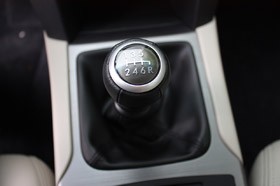
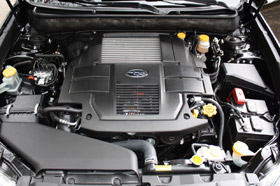
For 2010, Subaru has significantly addressed the value equation on six-cylinder Legacy models. Now dubbed 3.6R in deference to its larger engine capacity, the big boxer offers a bit more power (256 horsepower @ 6,000 rpm) and much improved torque (247 lb-ft @ 4,400 rpm), but only requires 87 octane hooch. The Tribeca-sourced 3.6 is available exclusively with a conventional five-speed automatic, but at least it packs rev-matched downshift blips. It's a markedly better package than its predecessor, one that's well suited to a more relaxed driving style, yet it offers plenty of juice under all conditions.
Subaru has taken a scythe to the six's pricing as well, with the least-expensive model tumbling from $27,290 to $25,690. Regardless of what 3.6R is selected, Subaru reckons you'll save $1,600-$1,900 over a comparable model from last year, and you'll need less gasoline too (fuel economy nudges upward from 17/24 to 18/25).
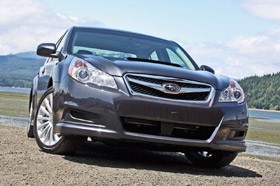
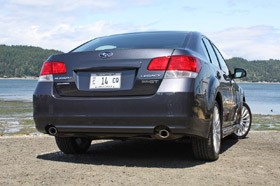
Improved value or no, make no mistake that the most engaging Legacy is the 2.5GT – by a winding country mile. While the force-fed four may require premium gas to achieve its 265 hp (@5,600 rpm) and 258 lb-ft of torque, it's worth it. The engine has been retuned to deliver maximum torque from 2,000 rpm on up to 5,200 rpm, and there's a 30% reduction in turbo spool up time, according to Subie officials. Combined with a 25% larger intercooler core and a relocated turbo (now bottom-mounted for better flow and noise characteristics), it's a flexible gem with fuel economy equal to that of the 3.6R.
Paired exclusively with a new six-speed manual, the $27,995 GT quickly outed itself as a fun-to-drive sport sedan. While the gearshift itself won't lead any Honda or BMW engineers to seek counseling, the slightly notchy lever worked well enough with its nicely weighted clutch (though a crisper engagement point would be nice), and it was a pleasure to keep the distinctive-sounding flat-four on song. We'd guess that this combination is good for a 0-60 mph time in the mid-to-high fives, but no official performance figures have been released.
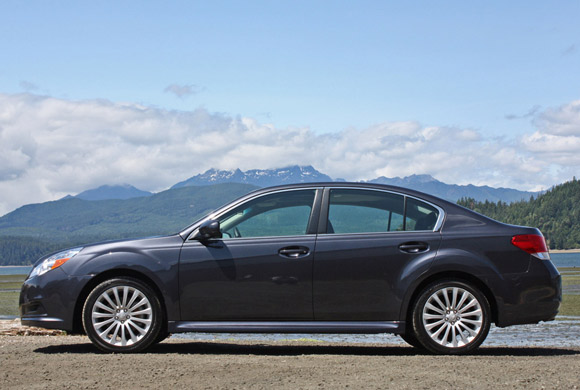
More importantly, the blown four combines with a retuned rack-and-pinion steering setup to deliver a whoopin' good time on the twisty tarmac we found on the roads outside of Seattle. The combination of all-wheel drive and a longer wheelbase might lead one to think that the new Legacy would be a bit reluctant to respond when asked to quickly change directions, but that isn't the case at all – this is a sedan that shrinks around its driver at speed. Subaru has fitted the quicker variable power-assist setup that was previously a GT-spec item to all 2010 models, and the 14.5:1 system delivers a more confident steer, with noticeably quicker turn-in and good accuracy arriving from the P225/45 18-inch tires. As ever, we might wish for a bit more weight at elevated speeds, but it's a minor quibble.
In an effort to further improve the Legacy's dynamics and ride, Fuji Heavy's engineers have tweaked the front MacPherson strut suspension and completely binned the outgoing car's multi-link rear suspension in favor of an isolated subframe-mounted double-wishbone setup. The result is both a quieter, more comfortable ride and more composed handling with less roll, along with greater trunk space. Subaru's boffins have also redesigned the brake booster with a stiffer housing and redesigned valves to result in a 20% better response time from the four-wheel discs. Combined with the new chassis' stiffer structure, this 2.5GT is as planted and entertaining as anything we've driven in-class.
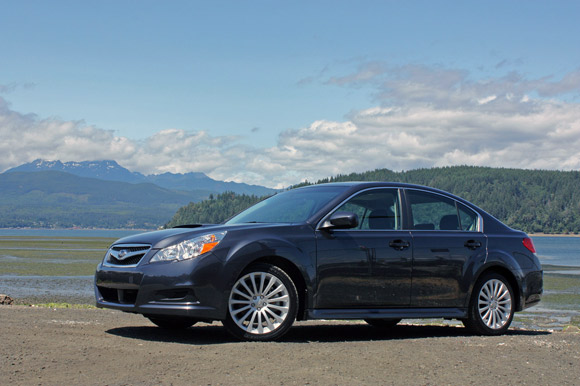
When we inquired about the possibility of selling a Legacy equipped with the torque-rich 2.0-liter diesel boxer currently on offer in Europe, Subaru officials were decidedly non-committal. While the price of U.S. diesel has dropped precipitously over the past several months, significant reengineering costs would have to be figured in accommodate North America's far inferior fuel quality, and the company is unsure about being able to produce such models at a profit. By their own estimates, Subaru officials confide that they believe that that the leader in affordable diesel, Volkswagen, is "subventing" their stateside TDI offerings "by several thousand dollars" – a nice way of saying that they're losing money on each unit sold in order to test the waters and gain share.
Oil-burning model or no, given that this new Legacy is at once larger, more refined, and less fuel-hungry than its predecessor, it was reasonable to fear that Subaru might have sacrificed some of the Legacy's character and fun-to-drive nature in exchange for a thicker slice of America's often banal mid-size sedan pie. We needn't have worried. While its considerable virtues may end up appealing to a broader consumer audience, this Indiana-assembled sedan remains very much a Swede-in-Japanese clothing, one with all the makings of a winning package that should appeal to both marque loyalists and a few additional new faces. More's the better.
Photos Copyright ©2008 Chris Paukert / Weblogs, Inc.
| 2010 Subaru Legacy | |||
| Performance | 2.5i | 2.5GT | 3.6R |
| Engine | 2,457 cc flat-four | 2,457 cc turbocharged flat-four | 3,630 cc flat-six |
| Configuration/Valvetrain | SOHC, four valves per cyl., AVLS | DOHC, four valves per cyl., AVCS | DOHC, four valves per cyl., AVCS |
| Max Horsepower @ RPM | 170 hp @ 5600 RPM | 265 hp @ 5,600 RPM | 256 hp @ 6,000 RPM |
| Max Torque @ RPM | 170 lb-ft @ 4,000 RPM | 258 lb-ft @ 2,000-5,200 RPM | 247 lb-ft @ 4,400 RPM |
| Drive Type | All-wheel drive | All-wheel drive | All-wheel drive with VTD |
| Transmission | Std: 6-speed manual, Opt: CVT | 6-speed manual | 5-speed automatic w/ paddle shifters |
| Fuel Injection | EFI | EFI | EFI |
| Compression Ratio | 10:1 | 8.4:1 | 10.5:1 |
| Recommended Fuel | 87 octane | 91 octane | 87 octane |
| Fuel Capacity | 18.5 gallons | ||
| EPA Fuel Economy (city/hwy) | 6-spd: 19/27, CVT: 23/31 | 18/25 | 18/25 |
| 0-60 mph time (MFR est.) | Not available | Not available | Not available |
| Top Speed | Not available | Not available | Not available |
| Suspension/Steering | |||
| Front | MacPherson, with anti-roll bar | ||
| Rear | Double wishbone | ||
| Steering | Rack-and-pinion w/ variable power assist | ||
| Turns Lock-to-Lock | Not available | ||
| Turning Circle (feet) | 36.8 ft. | ||
| Brakes/Tires/Wheels | |||
| Front Brakes | Dual piston, 11.6-inch | Dual piston, 12.4-inch | Dual piston, 12.4-inch |
| Rear Brakes | Single piston, 11.3-inch | Single piston, 11.4-inch | Single piston, 11.4-inch |
| Wheels (front) | 2.5i: 16-in. steel w/covers Premium: 16-in. alloy Limited: 17-in. alloy |
18-inch alloy | 17-inch alloy |
| Wheels (rear) | Same as above | ||
| Tires (front) | 205/60R16 Limited: 215/50R17 |
225/45 R18 | 225/50 R17 |
| Tires (rear) | 205/60R16 Limited: 215/50R17 |
225/45 R18 | 225/50 R17 |
| Exterior Dimensions | |||
| Length | 186.4 inches | ||
| Width | 71.7 inches | ||
| Height | 59.3 inches | ||
| Wheelbase | 108.3 inches | ||
| Curb Weight | 2.5i 6-sp.: 3,270 2.5i CVT: 3,379 Premium 6-sp.: 3,275 Premium CVT: 3,384 Limited CVT: 3,451 |
2.5GT Premium 6-sp.: 3,440 2.5GT Limited 6-sp.: 3,477 |
3.6R: 3,481 Premium: 3,518 Limited: 3,557 |
| Interior Dimensions | |||
| Maximum Seating | 5 | ||
| Trunk Capacity | 14.7 cu-ft | ||
| Head Room (Front/Rear) | 40.3 in. / 37.5 in. With moonroof: 38.1 in. / 37.5 in. |
||
| Shoulder Room (Front/Rear) | 56.3 in. / 56.1 in. | ||
| Leg Room (Front/Rear) | 43.0 in. / 37.8 in. | ||
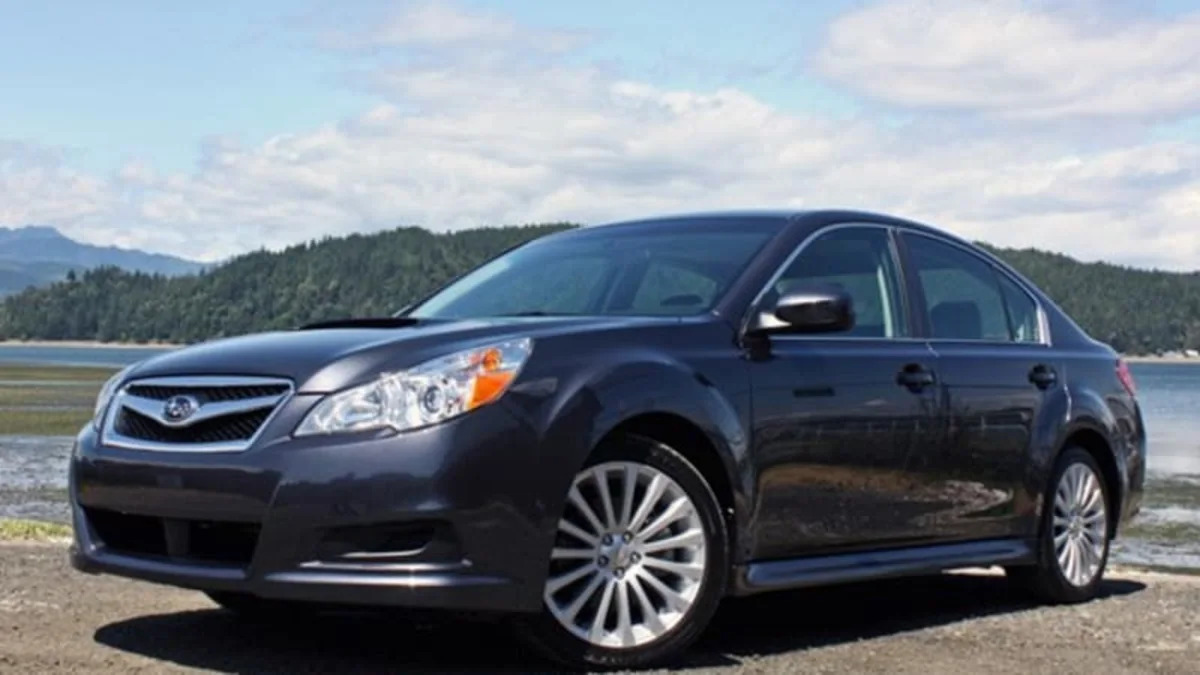
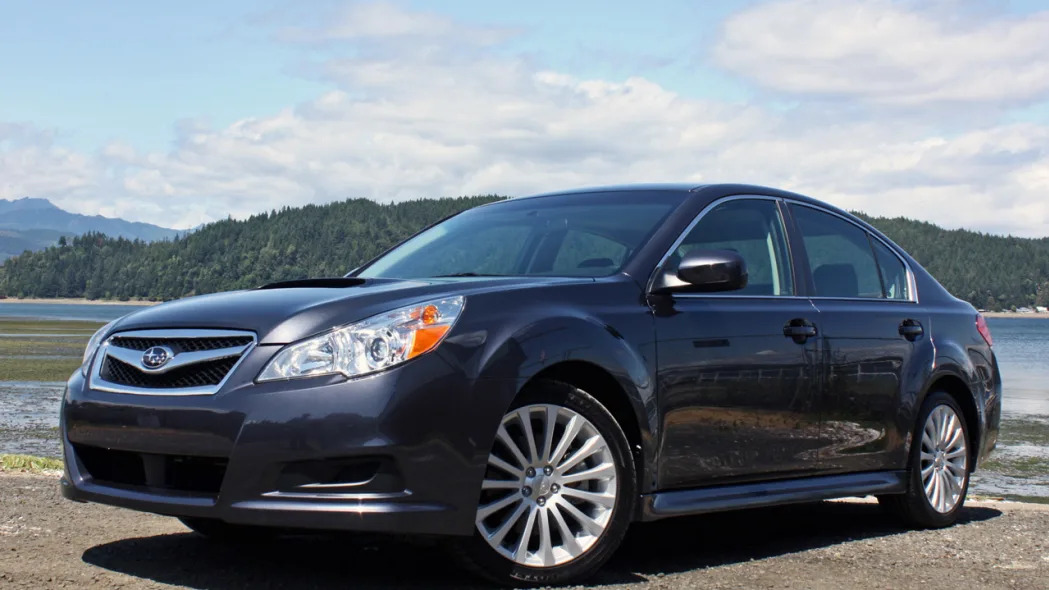

Sign in to post
Please sign in to leave a comment.
Continue